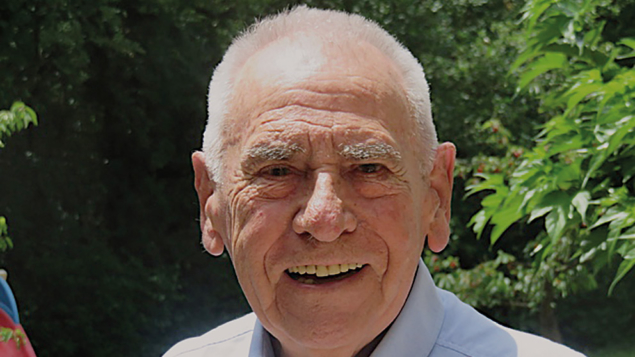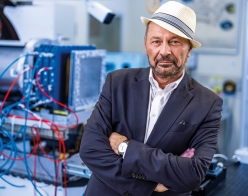
Henri Laporte, who led the civil-engineering work for the Large Electron Positron collider (LEP) at CERN, passed away on 18 May. Built in the 1980s, LEP was the biggest construction project for fundamental research ever undertaken and included the construction of the 27 km-circumference tunnel that now houses the LHC.
A native of Sète in the south of France, Laporte graduated from the École Polytechnique and École des Ponts et Chaussées, and began his career in marine engineering in the early 1950s. He was appointed as chief engineer, first for the construction of the port of Oran and then the Toulon naval base, before moving to French Polynesia in 1963 to preside over the extension of the Port of Papeete. In 1967 he was recruited by CERN to lead the technical services and buildings division.
Known for his relentless work ethic, expertise and authority, Laporte joined LEP at the start of the 1980s and was given responsibility for the hugely ambitious civil-engineering project by project leader Emilio Picasso. Before excavation could begin, however, CERN had to get the local authorities on board as the tunnel would pass underneath about 10 Swiss and French communes, and nine sites would be built on the surface. Under Robert Lévy-Mandel, who was in charge of the impact study, dozens of consultation meetings were held. Laporte shone on these occasions thanks to his oratory and interpersonal skills.
The flagship construction project began in 1983 with the excavation of 18 shafts, followed by the excavation of the tunnel itself. Three tunnel-boring machines were required to dig out 23 km’s worth of earth under the plain. Explosives were used to excavate the section of the tunnel below the Jura mountains due to fears that a geological incident could halt the progress of the machines. And such an incident did indeed occur in 1986, when high-pressure inflows of water flooded the tunnel, causing delays to the project. Laporte’s expertise and leadership were decisive in the response to this incident and throughout the project as a whole. It was a regular occurrence for him to arrive on site any time of day or night to study damage and take urgent decisions. In 1988 the tunnel was finally completed.
But the main tunnel represented less than half the total excavation work, as the ring is punctuated with access shafts, caverns and service tunnels. In addition, around 80 buildings were built on the surface. Jean-Luc Baldy, who managed the surface work, and Michel Mayoud, who was in charge of the crucial work of the surveyors, remember the trust that Laporte placed in them, giving them considerable room for manoeuvre.
Once the construction work had been completed, CERN became entangled in protracted legal proceedings involving the consortium of companies that had carried out the work. Laporte spent several years working with the CERN legal service, once more demonstrating his trademark persistence. At the arbitration tribunal, Laporte distinguished himself not only for his technical knowledge, but also his talent as an actor and his humour. He retired in 1993 and devoted himself to numerous intellectual and artistic pursuits.
Henri Laporte was a man of great curiosity and was highly knowledgeable in many fields. He will be remembered as a charismatic man, with a firm hand and great tenacity, but also someone who exuded a contagious joviality and always showed compassion towards his colleagues.








